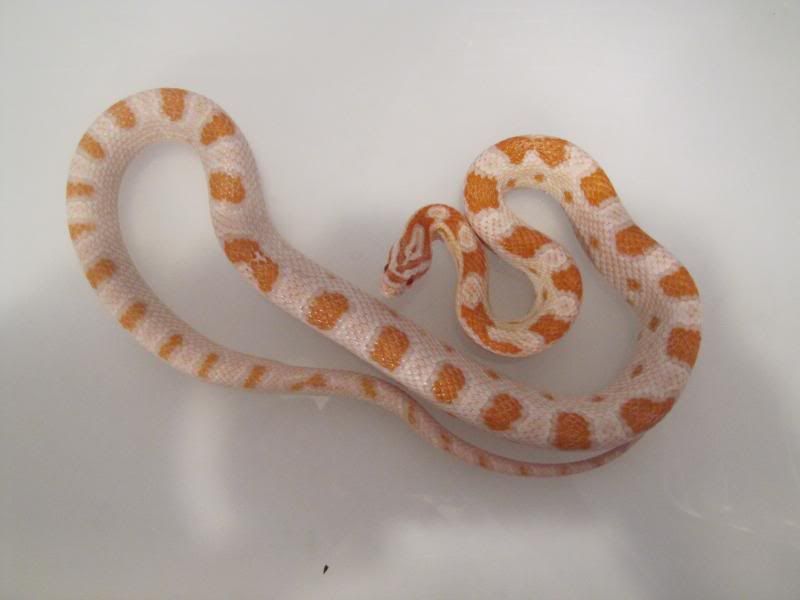DuchessNeeka
New member
I believe I'll follow on with the requested creamsicle pictures.
Here is my little creamsicle motley, Korben.


Here is my little creamsicle motley, Korben.




I know a couple breeders who breed various emory rat/corn crosses, "creamsicles" are just the amel version. Just about every recessive gene in found in corn snakes has probably been crossed into "creams"
No, creamsicle does not have other morphs.Thanks for sharing and so it appears that we do have many morphs....
No, creamsicle does not have other morphs.
Carpe, you should write a book to set the world str8.
Would you settle for there are many possible phenotypic variants of creamsicle? Which in short means, other recessive genes can be bred into hybrid corn snakes thus affecting their paint job or phenotype.... i.e. what we can visibly see.
Creamsicle is a morph... an amel morph of rootbeers which are normal offspring of emoyri x corn pairing. I believe is what the point is...:headbang: but of course I could be way off base!
Carpe, this is for you buddy!
I know a couple breeders who breed various emory rat/corn crosses, "creamsicles" are just the amel version. Just about every recessive gene in found in corn snakes has probably been crossed into "creams"

